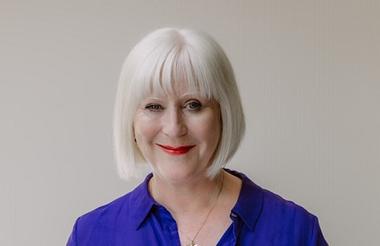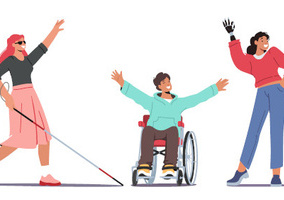When I joined RNIB as a chair in 2020 with sight loss myself, it was a given that it would be hard to recruit other blind and partially sighted board members with the experience we needed. It’s true that it wasn’t easy.
We had to think differently about how we identified people we wanted to talk to. We’ve thought creatively about timeframes, less traditional ways of working with recruiters, and how we want to build a pipeline. We’re in the foothills but thinking more creatively is starting to yield results.
The same can be said of our operational colleagues. We currently run at about 17% of our workforce as blind or partially sighted. We want to employ people with sight loss because we want people with skin in the game and to shift the misconceptions about people with sight loss in the workplace.
When you add in high levels of commitment from people who often use tech intuitively, who are not phased by challenges because they live it every day so it’s in their DNA, who are driven and determined, you have a winning formula.
But if you’re not a sight loss charity, why would you bother about recruiting blind and partially sighted people?
Driving your purpose
Right now, it’s hard to recruit good people and it’s hard to find good jobs, so we must do things differently if our charities are going to thrive. Recruiting blind and partially sighted people can help widen the talent pool and increase diversity and innovation, drawing on the value that blind and partially sighted employees bring to an organisation.
For disabled people, the blocks to employment are real but often irrational. Sometimes a bit of unconscious bias might be at play, sometimes it’s the fear factor. I was once told that I wasn’t a suitable candidate because I was a health and safety risk. I’ve never spontaneously combusted although that might have been the moment to do so.
I’ve never driven a car but I won an award for the training I developed on parking management in London in the 90s. I’ve never been long-term unemployed but I spent much of my early career working around unemployment, successfully developing approaches to job searching at the height of an economic crisis.
As well as recruiting blind and partially sighted people into your charity, you may also have a colleague who is losing their sight. It makes good sense to keep them in their job rather than leaving you with an unplanned talent gap, plus the expense of recruitment and the time it takes to bed the next person in. Last year RNIB helped more than 1,100 people keep their jobs when they lost their sight.
Advances in accessible technology, more flexible working policies and approaches, coupled with support from the Department for Work and Pensions’ Access to Work scheme can make it easier, more cost effective and more straightforward to retain an employee with sight loss than to go back to the market. All of this strengthens the psychological contract between employer and employee and helps drive your purpose.
Learning from the commercial sector
I’m not proposing a niche activity for the charity sector. I’ve met some terrific leaders in the commercial sector who share my ambition to lead organisations where disabled people can thrive and where business gets the benefit of great talent.
Last year RNIB helped 400 blind and partially sighted people move into employment and we want to do more. We can’t shift the dial one job at a time. That’s why we’ve started whole company approaches with partners like DWP, HMRC, Tesco, Worldline and BT, helping them to gain a Visibly Better Employer accreditation, proving that accessible recruitment processes work. More than 200 people with sight loss have found work through this route in the last 12 months.
There are obvious advantages that this approach brings; from developing equitable workplaces to building organisational culture and workforce loyalty. As a sector we are all under huge pressure and this approach is just one way in which we help underpin our organisations to keep delivery through some tough times, and at the same time, live our values.
It's often hard to embrace the best of our commercial cousins’ practices and retain what makes the sector special, but what I am advocating can only serve to strengthen our lived values. This is just one way in which we can all come together in a joint endeavour.
Inclusion by design is what the Women and Equalities Committee is promoting in other spaces. There is no reason we can’t grasp the challenge of a well-designed inclusive approach to employment and at the same time help solve some of the real capability gaps we all face.
From the earliest stages of job design to inclusive recruitment and selection practices to flexible working policies, not only is it doable, but it’s in all our interests.












